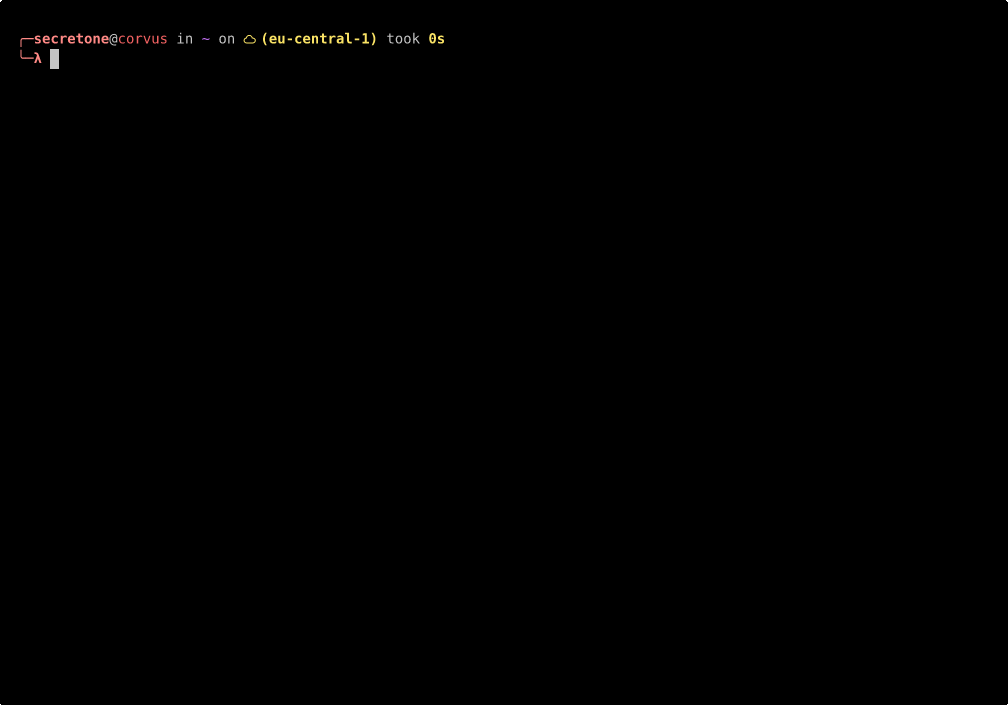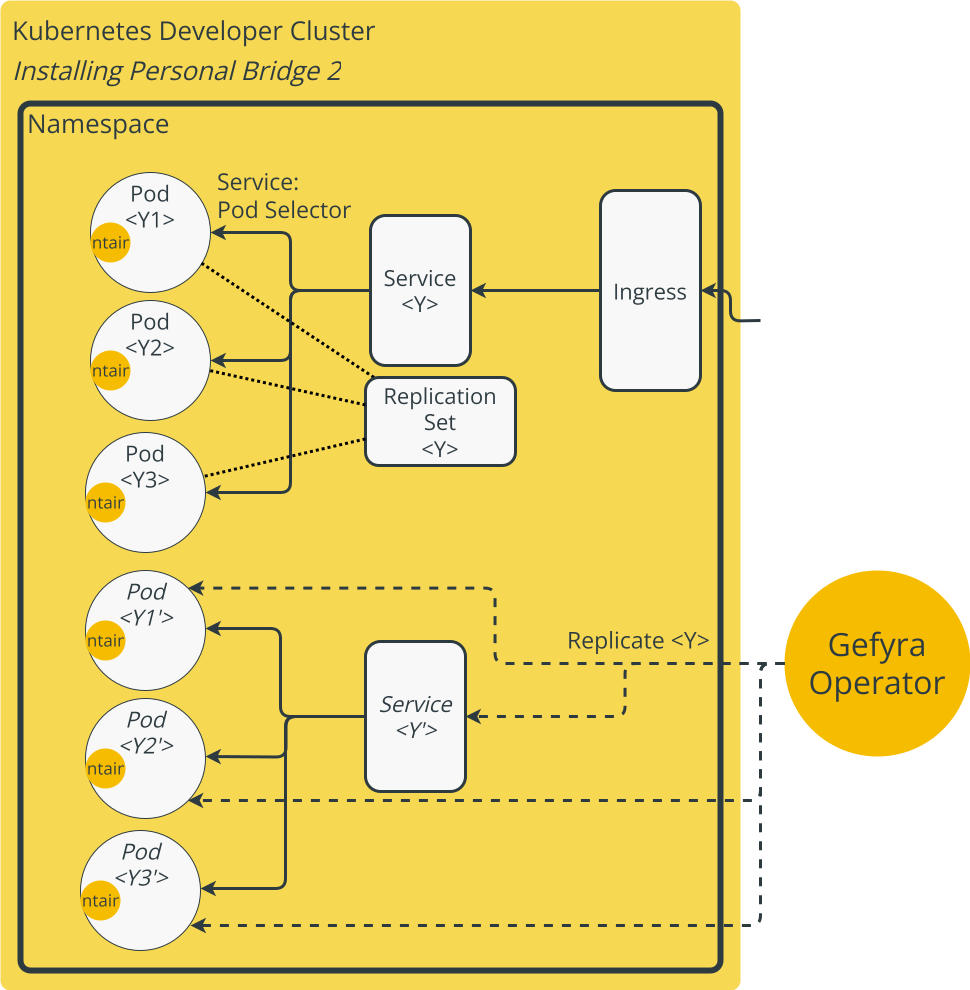27.03.2025
Flexible and efficient Kubernetes development with Gefyra
Gefyra Roadmap 2025
Gefyra has big plans for 2025! From improved developer tools to new integrations and better performance – the roadmap is packed with exciting updates. In this blog post, we’ll walk you through what’s coming and how Gefyra aims to keep revolutionizing development and debugging in Kubernetes. Stick around for a glimpse into the next chapter!
Table of Contents
Gefyra for Kubernetes development: What’s coming in 2025
You’re developing in Kubernetes and tired of slow testing and endless deploy loops? Then you’re going to love Gefyra – and 2025 even more. The upcoming features will seriously level up your developer experience. Here's what the Gefyra roadmap has in store: performance boosts, a new config file, CI integration, and the game-changer – User Bridges.
Discover how Gefyra changes your dev setupWhat is Gefyra?
If you're new to Gefyra it's an open-source tool that runs your local code directly inside a Kubernetes cluster – without any build or push cycles. This saves you tons of time and nerves when developing and debugging.
Since version 2.0 was released at the end of 2023, a lot has happened. So it's time for a clear roadmap for 2025, with everything that's coming.
Q1 2025: What’s already shipped
With the first quarter of 2025 almost over, here's a quick recap of what’s already landed:
- New CLI parameter --registry: Allows you to define a custom Docker registry to pull Gefyra images from – especially useful in air-gapped environments.
- New CLI parameter --mtu: Lets you change the default Wireguard MTU value (1340). This is handy when you're already connected to your Kubernetes cluster via VPN and want to set up a Gefyra connection.

Here’s a quick demo of the new parameters and how they affect the client file.
What else is coming in 2025
There’s even more planned for the rest of 2025!
1. Copy & Copy Sync
Let’s start with the Copy & Copy Sync Feature: It will allow you to sync local files with files in the cluster – and vice versa. As you can imagine, this is especially useful for config files introduced in a feature that haven’t been deployed to the cluster yet.
2. UDP-over-TCP-Support
Since April 2024 (and even a bit earlier), there’s been an Github Issue where Gefyra connections are only possible over UDP. We’re finally tackling that! Soon you’ll be able to use udp-over-tcp to run Gefyra in Kubernetes clusters that only support TCP load balancing.
3. Gefyra configuration file
Another exciting update is the Gefyra configuration file. It’s going to play a key role in 2025 and lay the groundwork for many upcoming features. The idea is to make Gefyra setups simpler and more reproducible. For example, you’ll be able to configure gefyra run to start two containers locally – and automatically create a bridge for one of them.
Say goodbye to digging through your Bash history to find the right run or bridge command.
4. CI integration
Once the config file feature is available, Gefyra will also be adapted for CI workflows. The goal is to support short-lived sessions and reproducibility – so your CI pipelines can reflect real use cases more reliably.
The highlight: User Bridges
And now to the biggest planned feature of 2025: User Bridges!
So what exactly are User Bridges? As you may know, Gefyra lets you "bridge" a local container and all its network requests into the target cluster. This allows you to test real flows and interactions with other microservices, databases, or task runners – without needing to deploy the code.
The big limitation of global bridges so far: only one person could bridge a given workload. That made simultaneous feature development on the same service a no-go.
This is where User Bridges come in. The concept is to create a copy of the target workload in the cluster.

Gefyra’s Carrier will continue to hook into the original workload. When a request matches certain rules (more on that in a sec), it’s handled by the patched workload. Otherwise, it’s passed on to the copy and processed by the original code.
To make all this work, a few things need to happen:
- Carrier will get a version II, built with Pingora, Cloudflare’s Rust-based networking library. This should give us faster startup times, improved reliability, and lower resource usage compared to the current nginx-based solution.
- We’ll introduce “bridge mount objects” – Kubernetes CRDs that prepare User Bridges for action, allowing even faster bridging. User Bridges will become the new default.
- Header & URL matching will be introduced. This is a key enabler for User Bridges. You’ll be able to define rules for how requests are routed. Fancy something like a header with regex path matching on the 5th subroute? Totally doable!
Gefyra 2025: A year full of developer optimizations
The 2025 roadmap clearly shows that Gefyra is evolving to make Kubernetes development more flexible and efficient. With features like Copy Sync, UDP-over-TCP support, and a new config file, the developer experience is about to get a serious upgrade. The real game-changer? User Bridges – enabling parallel feature development on the same service without deployment conflicts.
Exciting months ahead – and we can’t wait to roll out these features together with the community. Got feedback or ideas? We’d love to hear from you – Gefyra thrives on collaboration!
Frequently Asked Questions
1. What’s the benefit of the new User Bridges in Gefyra?
User Bridges let multiple developers work on the same Kubernetes service at the same time – no deploys needed, no conflicts. Perfect for team collaboration in microservice setups.
2. How does the Gefyra configuration file help in daily development?
The new gefyra.yaml file allows you to define your setup once and reuse it easily – great for teams, CI/CD pipelines, and structured workflows.
3. Will Gefyra be usable in CI/CD pipelines in 2025?
Yes! With short-lived sessions, automatic bridging, and reproducible environments, Gefyra is becoming CI-ready – ideal for testing real use cases in your pipelines.
4. Why is Copy & Sync an important feature for Kubernetes development?
Copy & Sync lets you automatically sync files between your local system and the cluster – for example, config files that aren’t yet deployed. That saves time and avoids misconfigurations.
5. What are the benefits of UDP-over-TCP support?
It enables Gefyra connections even in clusters that only allow TCP traffic – such as behind restrictive load balancers. More compatibility, fewer limitations.
Do you have questions or an opinion? With your GitHub account you can let us know...








